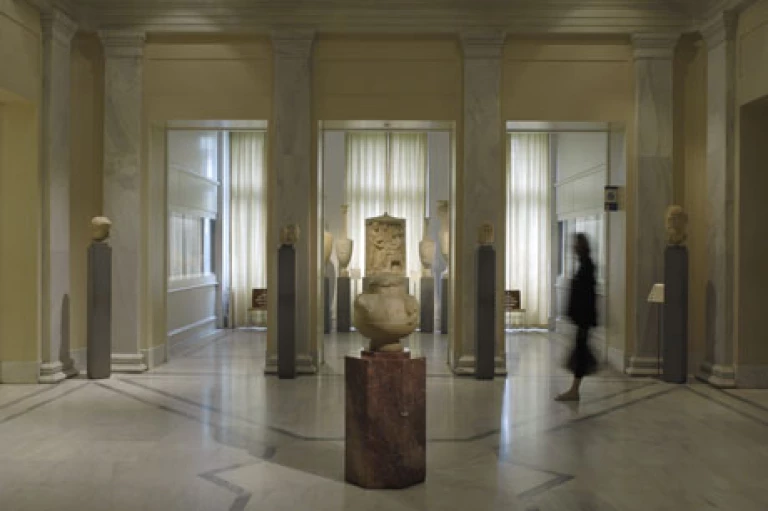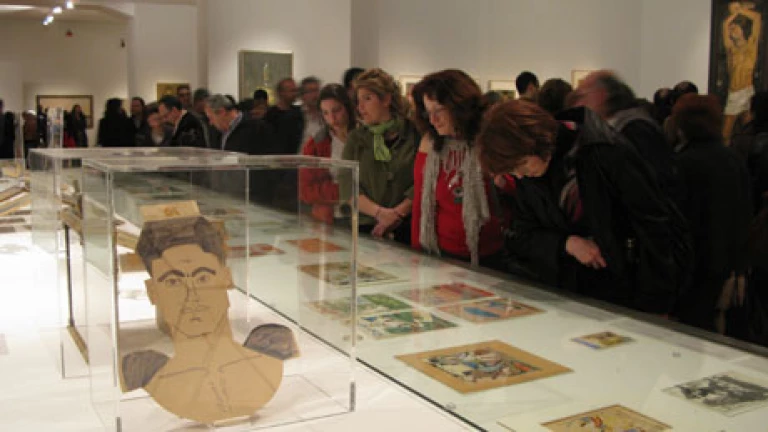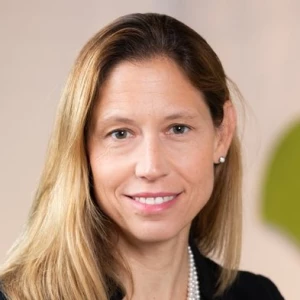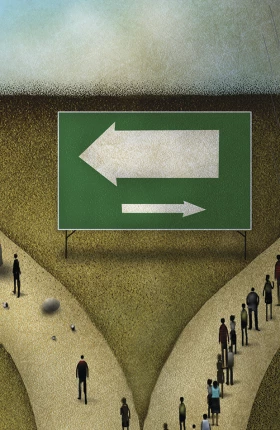Recent news of the financial problems and near dissolution of the American Folk Art Museum in New York was a sobering reminder that even venerable cultural institutions can and do fail. Given the downward trend in arts funding and growing demands for accountability in nonprofit organizations, how can museums find ways to survive and possibly thrive? Although the factors that lead to success are fairly straightforward—vision, leadership, financial resources, and effective marketing come to mind—they can be difficult to master. How can success itself be managed and measured?
While the idea of finding a way to measure a museum's performance is somewhat controversial—how does one assign monetary value to artistic and cultural offerings?—it is also long overdue, largely because comprehensive and reliable methodologies are in such short supply. Financial ratios and shareholder value may be good yardsticks for business, but evaluating a cultural institution is more complex. Any measurement of performance must consider artistic and intellectual contributions, not just financial strength. Fortunately, a proven business tool—the Balanced Scorecard—may be just what museums need to better measure their success in achieving target objectives. And the insights gleaned through this approach can help funders and administrators make more rational, productive decisions about how to allocate scarce resources.
Adapting the Balanced Scorecard
The Balanced Scorecard (BSC) is a planning and management system widely used by large corporations around the world to align business activities with corporate vision and strategy, improve internal and external communication, and monitor performance against strategic goals. The scorecard provides a “balanced” view of performance because it includes subjective measures and the input of external stakeholders, not just financial metrics. For instance, the BSC measures satisfaction and retention of both customers and employees. Moreover, the scorecard is balanced because it brings attention to possibly conflicting dimensions, such as productivity and employee satisfaction; high revenues and high perceived value, as measured by customer satisfaction; and low maintenance costs and minimal equipment downtime.
This balanced perspective is critical for cultural institutions, which must consider the needs of a broad range of stakeholders—donors, employees, artists, local businesses, researchers, the public, and local authorities—and their often-competing objectives. The public may seek education or entertainment, for instance, but local authorities are more likely to care about the impact that the institution has on the local economy. And donors want to be assured of financial sustainability before committing their support.
With these challenges in mind, The Boston Consulting Group adapted the BSC to the specific needs of museums, creating four dimensions of value against which to measure performance:
Artistic Contribution. How have the assets of the museum been developed and shared? A museum’s assets include its collections, intellectual capital, and brand. Performance measurements in this dimension would typically include metrics such as the percentage of works on display, the number of pieces on loan to other art museums, the number and quality of institutions to which the museum has lent art and artifacts, the number of pieces purchased in the last year, and the percentage of permanent collections acquired and catalogued. Since research and knowledge development are also important, this dimension could also include metrics such as the number of articles published by museum staff in scholarly journals or the number of collections catalogs published.
Public Benefit. What does the museum contribute to the community? A successful cultural institution forges a relationship with the public by offering programs and visitor services, by providing positive experiences, and by preserving collections for future generations—all of which lead to a favorable perception within the community. Metrics in this dimension typically include the range and variety of programs offered, the percentage of the museum’s budget devoted to marketing, the percentage of return visitors, the increase in first-time visitors, and the number of schoolchildren who visit per year. More qualitative measures—such as increases in the community's cultural knowledge and awareness or greater public appreciation for a particular author or art movement—are also valuable.
Learning and Growth. Is the museum a place where employees can flourish? An organization is only as good as its people, and providing an environment that promotes development and offers opportunities for professional and personal growth will pay major dividends in the long run. This dimension ensures that the culture supports the museum’s mission, organizational learning is ongoing, and equal opportunity is provided to all. Typical metrics include the percentage of the museum’s budget dedicated to training and career development, the percentage of satisfied employees, the use of “360-degree feedback” (that is, from subordinates and peers as well as superiors) to evaluate staff performance, and the degree to which employees are involved in the museum’s governance.
Finance and Governance. How well-run and financially sustainable is the museum? A cultural institution must use its resources efficiently and effectively to achieve the trust of the public. Moreover, its finances must be transparent and the governance organization must be accountable. Typical metrics include the ability to meet fundraising targets, balance the operating budget, and meet revenue targets through diversified sources such as admission, shop and restaurant sales, and special events.
To deliver value in all four dimensions, museums must create the right metrics, set performance targets, define specific initiatives for achieving those targets, and then closely monitor results.
BSC in Action: The Benaki Museum
Strolling through Greece’s Benaki Museum is like taking a journey through the country’s rich history and culture, from the Stone Age to today. Greece’s second most-visited museum and its oldest operating as a foundation under private law, Benaki was founded in the early 1930s. Over the years, it has expanded to fill six buildings with a wide range of unique collections, including prehistorical artifacts, art from the Byzantine era to the present, paintings, toys, and artifacts of Islamic culture. But shrinking private and public donations in the context of Greece’s challenging economic situation have taken a toll on Benaki. With rising costs and stalled revenues, the museum saw its financial future become precarious.

A close analysis revealed a number of challenges. First, the museum needed to define and promote a more focused vision and mission. With such diverse collections—all very high quality—Benaki needed to define a common thread so that it could communicate a compelling value proposition to visitors and donors while also articulating a focused program of exhibitions, events, publications, and educational programs.
The museum also had to find new ways to generate revenues. Despite the museum‘s central location, Benaki didn't tap the full potential of the tourist market. Instead, visitors tended to be locals. Moreover, Benaki’s publications, events, educational programs, restaurant, and store earned less than might be expected, given the museum‘s quality offerings and strong brand. Finally, Benaki’s fundraising efforts were not optimally developed.

Ultimately, Benaki had to manage its costs more closely and strengthen its approach to governance, while empowering more of its employees. The BSC offered Benaki a workable approach because it provides clear targets to drive greater transparency and accountability; it also encourages greater entrepreneurship, creativity, and initiative among employees.
The Scorecard Drives Results
Benaki’s Balanced Scorecard addressed the museum’s challenges in the context of the four dimensions of museum value: artistic contribution; public benefit; learning and growth; and finance and governance (See Exhibit 1). The BSC included specific metrics and targets in each dimension and reinforced them with a set of clear improvement initiatives.
For instance, to ensure a strong artistic contribution, Benaki set an objective of lending its collections to top institutions around the world. One metric measured the number of institutional borrowers, with a target of lending to the world’s top-ten peer institutions. The museum also reinforced the prioritization of events and exhibits.
In the dimension of public benefit, a key objective was to present first-class exhibitions. Metrics included both the number of positive reviews by critics per year and visitor satisfaction ratings; annual targets were set to achieve at least 80 percent positive reviews and 70 percent satisfaction rates, respectively.
To advance learning and growth, Benaki aimed to increase employee satisfaction and retention, as measured by job satisfaction ratings and staff turnover rates. The museum’s target was achieving employee satisfaction ratings at or above 80 percent and experiencing employee turnover below 15 percent per year. To improve communications and employee engagement, Benaki displayed a scoreboard in each building to share information on current and upcoming exhibitions and programs, messages from the curator, employee suggestions, best practices, and fundraising progress. The museum has also focused on making sure that employees understand the museum’s mission, what’s expected from them, and how they can contribute to the museum on both an individual and collective basis.
To improve finance and governance, Benaki hired a fundraising manager to increase external donations and a finance manager to instill more discipline. One critical early success was an ambitious new fundraising program, which offers customized packages to companies and individuals. The new financial manager established a budgeting and control process aimed at managing costs more closely and increasing transparency.
With greater financial controls in place and higher revenues being generated through fundraising, ticket sales, restaurant operations, and store and online sales, the museum is paving the way for a strong, sustainable future.
Ongoing Benefits
Museums that use the BSC to measure performance can fundamentally change the way they think about the value they deliver—and how they communicate that value to stakeholders. Moreover, the scorecard can help align the staff's efforts in support of the museum’s mission and goals—and can increase employee satisfaction overall. For Benaki, these cultural changes are as important as the renewed focus on the bottom line and the enhanced financial sustainability.








